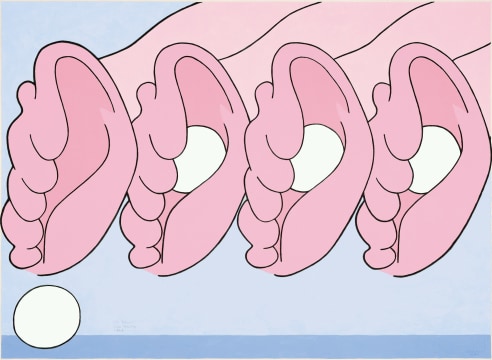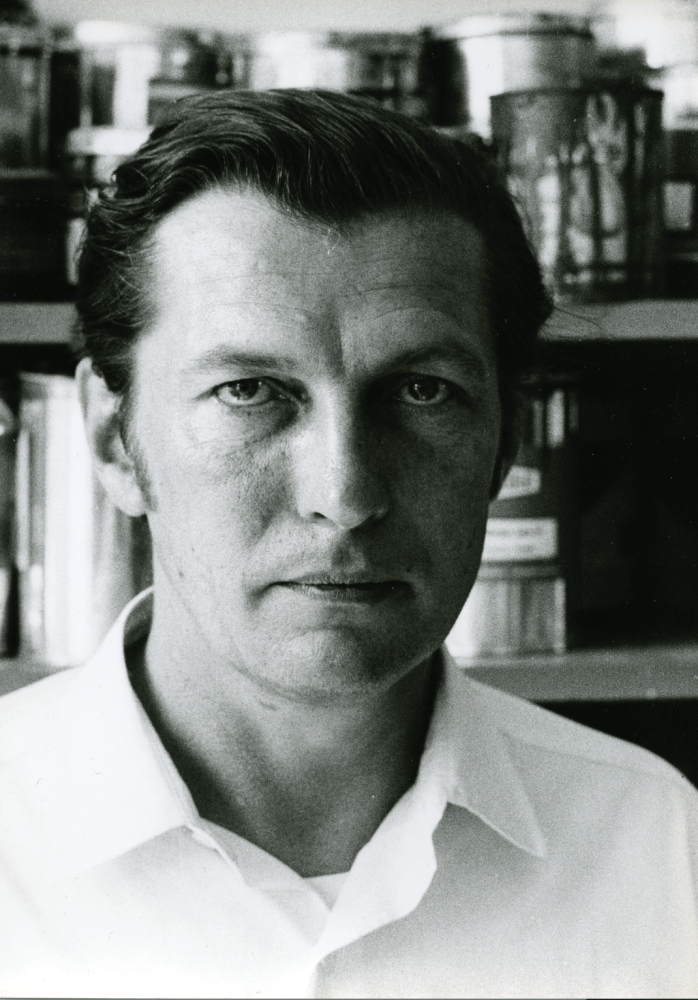

“Wesley has managed to assemble an enormous international constituency of devotees without once attracting the silly glare of paparazzo adulation, the resentful hysteria of political acrimony, or the cloudy glaze of educational explanation. In fact, Wesley’s continuing vogue as a painter is, in its every aspect, more closely akin to that of a great jazz musician or song writer than to that of an American artist. In the enclave of enthusiasts, he is simply John Wesley, an acknowledged master, the Cole Porter of painting. Those who know know; those who care care; those who don’t know or care don’t have a clue, but that’s okay, too.”—Dave Hickey, Artforum
“With great economy of means, the L.A-born, New York-based painter thrusts viewers into a tumultuous world whose two-dimensional figures evoke bodily responses that are anything but skin-deep. As abstract and formally resolved as they are intimate and psychologically ambiguous, Wesley’s worldly paintings mix sophistication and vulgarity in a stimulating blend of embarrassing richness.” —David Pagel, LA Times
“The complex world of John Wesley is, paradoxically reached via a short journey, and the ease with which he is able to conjure up special effects in the viewer’s minds places his work in the great tradition of the blind visionary. Under the surface of his absurd utterances, however, a scathing commentary on society, superficiality, power or abuse can be found, if one only wants to look for it.” --Carolyn Christov-Bakargiev, “John Wesley: A Retrospective,” PS1/MoMA
John Wesley has created an ineffable body of work whose subject is no less than the American psyche. While many artists of his generation have used the popular image to explore the cultural landscape, Wesley has employed a comic-strip style and a compositional rigor to make deeply personal, often mysterious paintings that strike at the core of our most primal fears, joys, and desires.
Originally grouped with the Pop Art movement, and later on linked, due to the essentiality of his production, to Minimal Art (to such an extent that Donald Judd and Dan Flavin were counted among his greatest admirers), Wesley eludes simple classification. In fact, Wesley himself found both terms (Pop and Minimalism) to be reductive. With his meticulously expressive line, self-reflexive color palette, and photo-based meta-representations (as Judd described them), Wesley remains a unique voice in American art, whose work is best understood not as an outlier to these two canonical movements, but as a reaction. Wesley keeps a great distance from the aggressive reality of Pop and the unambiguous materiality of minimalism in favor of turning inward toward a radical intimacy.
John Wesley has been exhibited and collected by museums worldwide since the 1960s. Surveys of his work have been held at the Stedelijk Museum, Amsterdam, curated by Rudi Fuchs and Kasper Koenig (travelled to Portikus); Museum Ludwigsburg, curated by Udo Kittleman (travelled to DAAD, Berlin); PS1 MoMA, Long Island City, curated by Alana Heiss; Harvard University Art Museums, Cambridge, MA, curated by Linda Norden; Museum Haus Lange, Krefeld, Germany, curated by Martin Henschel; Chinati Foundation, Marfa, TX, curated by Marianne Stockebrand; and Fondazione Prada at the Venice Biennale curated by Germano Celant. Since 2004, the Chinati Foundation, Marfa, TX. has maintained a permanent gallery housing its collection of Wesley’s paintings, as was intended by Judd since the foundation’s inception. In 2014, Wesley was commissioned to create a public art project for the High Line. The artist has had over 70 solo exhibitions including 14 at Fredericks & Freiser.